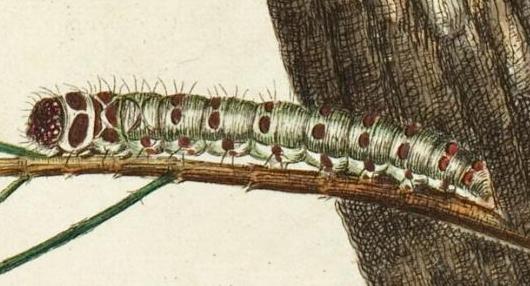
caterpillar, drawing by John Lewin,
A natural history of the Lepidopterous insects of New South Wales,
London: J. H. Bohte, 1822, Plate 10,
courtesy of the
National Gallery of Australia
The Caterpillar of this species has sparse stiff bristles all over,
including the head.
The head is brown and crinkled.
The prothorax is white with two dark marks.
The mesothorax is grey
with a pattern of several orange or red knobs.
The metathorax is white
with dark crossing lines on top, and knobs at the sides.
The abdomen is off-white with several orange or red knobs on each segment,
and with wide grey rings between segments.
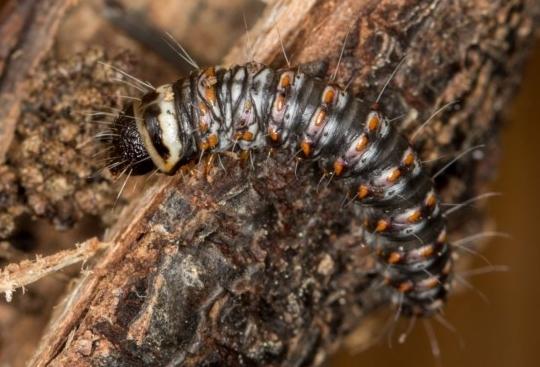
(Photo: courtesy of
Bronwyn King, Lake Ginninderra, Australian Capital Territory)
The caterpillar lives in a tunnel bored into a branch of a
She Oak ( Casuarina species,
CASUARINACEAE ).
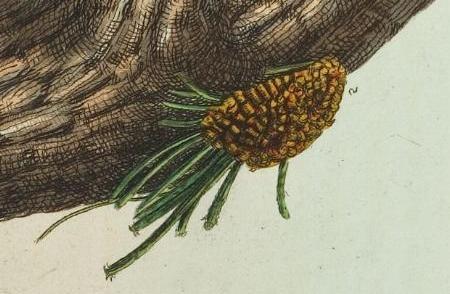
tunnel cover, drawing by John Lewin,
A natural history of the Lepidopterous insects of New South Wales,
London: J. H. Bohte, 1822, Plate 10,
courtesy of the
National Gallery of Australia
Some branchlets are attached to the frass and silk cover of the entrance to its tunnel.
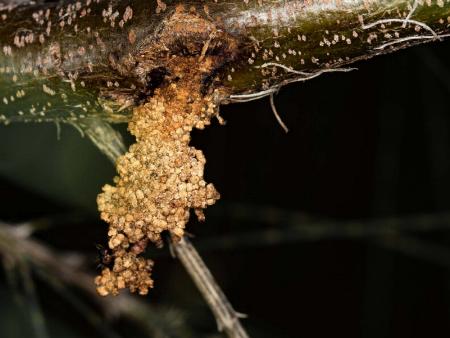
tunnel cover
(Photo: courtesy of
Bronwyn King, Melba, Australian Capital Territory)
By day: the caterpillar feeds on branchlets brought into its tunnel the previous night.

pupa in tunnel, drawing by John Lewin,
A natural history of the Lepidopterous insects of New South Wales,
London: J. H. Bohte, 1822, Plate 10,
courtesy of the
National Gallery of Australia
The caterpillar pupates in its tunnel.
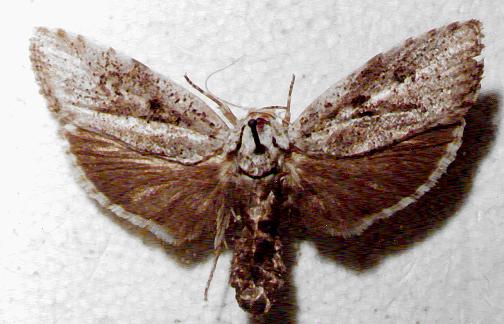
female
(Specimen: courtesy of the
Macleay Collection, Chau Chak Wing Museum, University of Sydney)
The adult moths are grey
with a subtle pattern of markings on the forewings.
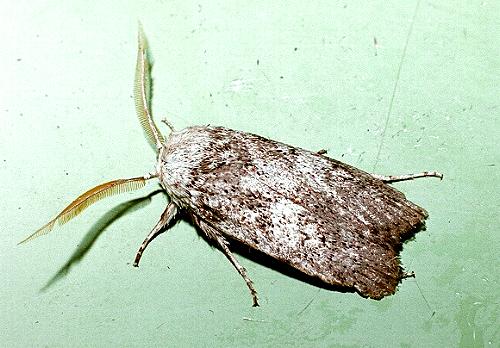
male
(Photo: Don Herbison-Evans, Concord, New South Wales)
The sexes are slightly dimorphic.
The females are inclined to have a bolder pattern than the males.
The moths have a wingspan of about 4 cms.
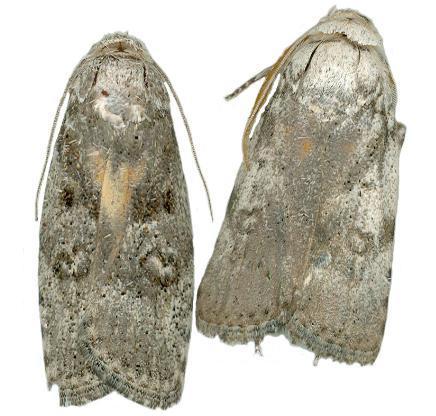
female(left) and male(right)
(Photo: courtesy of
Graeme Cocks, Townsville, Queensland)
The eggs are pale green and spheroidal,
and are laid in irregular piles.
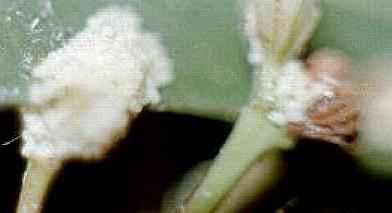
egg masses
This species is found all along the eastern
seaboard of Australia, including
Queensland,
New South Wales,
Australian Capital Territory,
Victoria, and
South Australia.
Further reading :
Ian F.B. Common,
Moths of Australia,
Melbourne University Press, 1990, fig. 23.15, p. 230.
John William Lewin,
Prodromus Entomology,
Natural History of Lepidopterous Insects of New South Wales,
London : T. Bensley (1805), p. 11, and also
Plate 10.
Ian McMillan,
Blog, Wednesday, September 15, 2010,
Xyloryctine Moths of Australia,
Cryptophasa irrorata.
(updated 30 September 2012, 13 September 2025)














